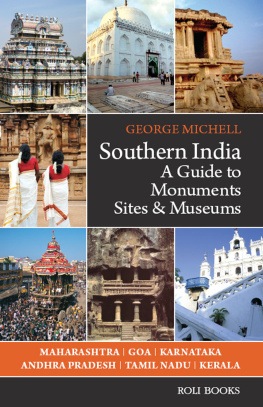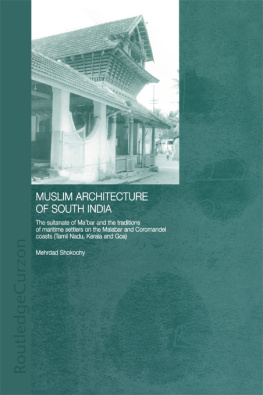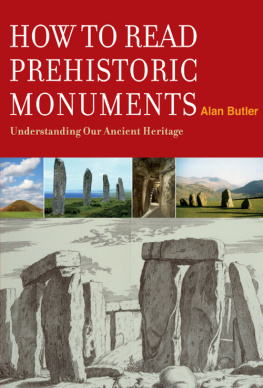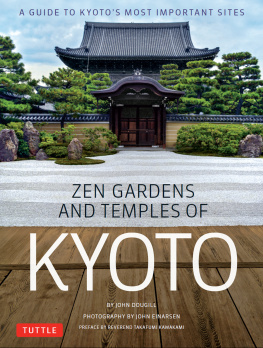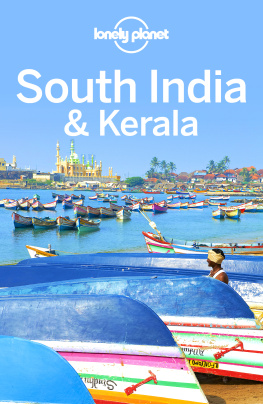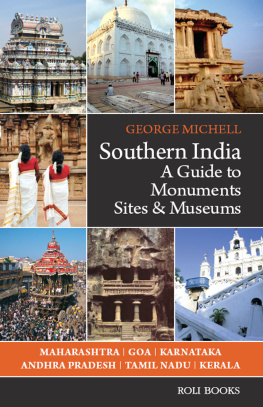PHOTO CREDITS
American Institute of India Studies: 37, 42-43, 70, 78, 91, 106, 113,
168, 188, 223, 238, 298, 332, 343, 357, 359, 371, 410, 414, 433, 465,
488, 510-511,540
Corbis: 54 (From 100 Wonders of India, Roli Books)
Dinodia: 2 (From 100 Wonders of India, Roli Books)
George Michell: 385, 388-89
India Picture: 10-11, 131, 179, 289, 481, 524
Iramuthusamy/ Wikimedia Commons: 160-161
Roli Collection: 194-195, 281
Sanjay Acharya/ Wikimedia Commons: 98
Toby Sinclair: 304-305 (From Forts & Palaces of India, Roli Books) Vijayshankar Munoli/ Wikimedia Commons: 139
Lotus Collection
George Michell, 2013
All rights reserved. No part of this publication may be reproduced or transmitted, in any form or by any means, without the prior permission of the publisher.
The Lotus Collection
An imprint of Roli Books Pvt. Ltd.
M-75, G.K. II Market, New Delhi 110 048
Phone: ++91 (011) 4068 2000. Fax: ++91 (011) 2921 7185
E-mail: info@rolibooks.com; Website: rolibooks.com
Also at Bengaluru, Chennai, & Mumbai
Frontispiece : Gommateshvara Monolith, Sravana Belgola, Karnataka.
Cover design: Bonita Vaz-Shimray
Layout: Sanjeev Mathpal
Production: Shaji Sahadevan & Jyoti De
ISBN: 978-81-7436-920-8
Contents
Foreword
I n recent years Southern India has attracted ever growing numbers of travellers, scholars, students and pilgrims from other parts of India, as well as from abroad. Yet until now there has been no comprehensive, handy reference to the regions major historical monuments and sites and principal museum collections. Hence the present volume, which is conceived as a series of itineraries based in and around a city or town where visitors may expect to find adequate accommodation and other essential facilities. The itineraries cover more than 500 monuments and sites, far more than visitors could expect to reach in a single tour, no matter how extended. These places are all included here in the hope that visitors will consider returning to Southern India on more than one occasion so as to explore a region that is unusually richly endowed with ancient buildings, remains, and objects and artefacts spanning more than 2,000 year of history.
In preparing this volume, I have benefitted from inputs offered by friends and colleagues. They include Andrew Bauer, Henry Brownrigg, John Copland, Anna L. Dallapiccola, John M. Fritz, Sandhya Harendra, Helen Philon, Klaus Rtzer and Bob Simkin. Priya Kapoor, together with her team at Roli Books in Delhi, has offered encouragement and editorial and design skills. To all these individuals I offer my sincere thanks.
George Michell
Goa, January 2013
Southern India, Physical.
Southern India, Political.
INTRODUCTION
History
T he dense array of monuments and sites that forms the subject of this volume is a testament to the historical complexity of Southern India over more than 2,000 years. Never during this long period was the region unified into a single state.
T HE F IRST K INGDOMS
While the presence of Ashokan edicts at Brahmagiri [20L] and Maski [20M] in Karnataka indicate that this part of Southern India formed part of the Maurya empire of Northern India in the 3rd century BCE, it is not until the following century that the region emerges as a historical entity, under the Satavahanas of Paithan [5L] in southern Maharashtra. From this centre the Satavahanas spread their influence throughout the region, and even beyond, into central India, conquering a vast territory that encompassed much of the peninsula. The Satavahanas were responsible for inaugurating Buddhist architecture in Southern India: the rock-cut sanctuaries at Ajanta [5F] and Pandu Lena [4B], as well as the free-standing complexes at Amaravati [29K] and Guntupalle [30B], are among the many monuments assigned to their reign. Some sites, like Ter [9D], are rich in coins, terracottas and ivories.
Though the Satavahanas were challenged on their western flank by the Shakas of Middle Eastern origin in the 1st century CE, they retained their independence until the end of the 2nd century, when they were supplanted by the Ikshvakus. Though this line of rulers was not so long-lived, they managed to wrest control of much of Andhra Pradesh in the 3rd - 4th centuries, selecting Nagarjunakonda [27H] on the Krishna River as their capital. At about the same time, the Tamil country came under the sway of the Pallavas of Kanchipuram [37E], but only fragmentary evidence is available for the first kings of this dynasty.
The Vakatakas of central India held an important place in politics and culture in the 4th-5th centuries, and their influence extended into Maharashtra. Nandivardhana [10B] served as one of their capitals, and vestiges of their presence are still seen on nearby Ramtek Hill [10B]. It is, however, for their patronage of rock-cut Buddhist shrines and monasteries at Ajanta and Aurangabad [5B] that these rulers and their subordinates are best known. Harishena (460-78) is the outstanding personality of the era; the painted depiction of a king receiving gifts from a foreign delegation in Cave 1 at Ajanta is sometimes thought to be his portrait.
E ARLY H INDU D YNASTIES
The next phase of Southern Indian history is marked by the growth of simultaneous lines of kings who sponsored Hindu monuments. The Mauryas and Kalachuris, who were active in Maharashtra in the 6th century, derived their wealth from the trade routes that led from the Arabian Sea Coast, known as the Konkan, to the Deccan plateau of the interior peninsula. Their cave-temples at Elephanta [2A] and Ellora (Caves 21 and 29) [5E] are the most elaborate of the era. These rulers were to some extent displaced by the Early Chalukyas of Badami [22A], who controlled most of Karnataka as well as parts of Andhra Pradesh. It was under these kings that structural architecture first appears in the region, as can be seen at Badami and nearby Pattadakal [22D] and Aihole [22E]. As they expanded southwards, the Early Chalukyas came into conflict with their rivals further south, the Pallavas. Pulakeshin (609-54), one of the prominent Early Chalukya kings, attained renown by defeating Harsha of Kanauj, the most powerful ruler of Northern India at the time, and executing raids on the Pallava capital of Kanchipuram. The Pallavas retaliated, and in 654 occupied Badami. Struggles between the two kingdoms continued into the 8th century, but the career of the Early Chalukyas came to an end in 753 with the invasion of their domains by the Rashtrakutas. These rulers brought a large part of Maharashtra, Karnataka and Andhra Pradesh under their sway. An idea of their considerable resources may be had from the colossal monolithic temple known as the Kailasa (Cave 16) at Ellora, begun by Krishna I (756-73).

